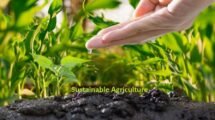Protecting farmers from climate change is not an expensive proposition: ICRISAT
Contrary to common assumptions, preserving agriculture from the negative effects of climate change is not an expensive undertaking. Scientists from the International Crops Research Institute for the Semi-Arid Tropics (ICRISAT) performed a pilot in Telangana’s rain-fed districts and advocated for the promotion of climate-smart villages (CSV) to ensure sustainable agricultural production by increasing resistance to climate change.
The project aided in the prioritization of climate-smart agriculture (CSA) practices for 8,000 farm households in the Mahabubnagar district, and the organization has developed a framework for extending the climate-smart village approach to other regions of the state.
Also Read | Walmart & ICRISAT jointly launched Secondary Processing Unit to help FPOs.
It is about prioritizing expenditure based on science-based policy and making critical investments to mitigate the negative effects of climate change. ‘It will not require a significant additional investment from the exchequer. It is about prioritizing investments in appropriate technologies in a context-specific manner, strengthening farmer ability, and providing adaption incentives,’ Shalander Kumar, Deputy Global Program Director at Icrisat, told
To demonstrate the importance of CSA in rainfed farming systems, an Icrisat team of specialists completed a pilot study on’scaling up climate-smart agriculture in Telangana.’
He claimed that significant climate variability was wreaking havoc on Telangana’s rainfed farming systems. ‘The existing efforts to solve this issue are fragmented. All agricultural development plans and strategies must include a climate lens. The key to mainstreaming CSA into development planning action is a science-policy interface supported by data and analysis, as well as sensitization of all stakeholders,’ he stated.
‘Funds and subsidies are available for the purchase of farm machinery and other farm equipment.’ It is about deciding what machines and equipment to purchase. ‘It’s all about prioritization,’ he explained.
Following the collection of data, the team conducted a climate risk analysis and undertook a multi-stakeholder participatory prioritization of CSA activities. ‘This method has the potential to be replicated throughout India and beyond,’ said Shalander Kumar.
The team conducted a climate exposure (or climate risk) assessment for baseline and mid-century climate circumstances in order to increase the effectiveness of CSA methods.
Divide into grids
The team collected data on temperature fluctuations, heat and cold wave events, rainfall variability, and changes in the frequency or intensity of consecutive dry and rainy days after dividing Telangana into 350 grids representing mandals.
Also Read | Agro & Food-tech start-ups are invited to online boot camp: ICRISAT & TEZ.
Using the data, the researchers developed maps that highlighted the ‘hotspots’ or mandals that were more vulnerable to climate change. These hotspots would necessitate rapid action.
‘This long-term climate analysis indicates high to extremely high climate risk in practically all mandals in the districts of Nalgonda, Adilabad, Yadadri, and Nagarkurnool,’ according to the research. ‘It is critical that climate-wise and sustainable agriculture methods become integrated into development and agricultural action plans from the local to the national level,’ said Shalander Kumar.


















Add Comment